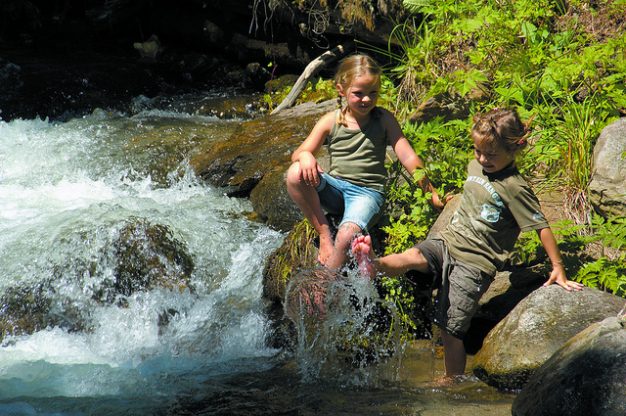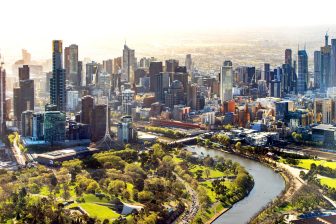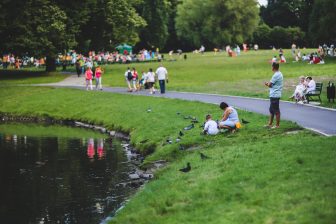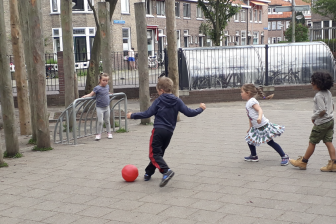
8 ways to create activities for children in a safe environment – part 2
The described methodology of organising activities for children in free, safe and inclusive environments was the outcome of the “Playground Without Borders” project. The project that took place in Tschierv, Switzerland (2014) aimed to gather organisations working with children in a joint project with the idea to create a week-long programme for children fostering education, creativity and inclusion in drug-free environments.
Here are 8 steps on how to do that (continued):
-
Organisation : Logistical preparation
After all the details are set (see 1st part: Detailing published on 8th February 2016) your next task is to look into the logistical part of the event. There are several issues to look into to make sure that you are ready:
– Consider the available budget for the event
Setting the budget early and realistically is a very important step, as it will affect the way in which you will conduct your activity; and it will set the level of quality you will deliver. Having in mind that your activity will involve children, who can get easily led and excited by an idea, it is always a good idea to finalise your budget and plan before you make any promises about the programme. In that way, you can avoid disappointments.
Safety is always the first priority when organising activities for children, so make sure you allocate enough funds for insurance or medical help at the spot, in case it is needed.
– Create an attractive programme for the children
There are many definitions of an attractive programme. It will depend on the age of the children and the theme of the event. Ideally, the programme should include an optimal mix of activities that offer creativity, learning new skills, education and free time. It is important to be flexible with the planning and timing and to be able to respond and adjust to children’s needs and reactions at the spot.
– Finding an appropriate accommodation setting in the selected location
Setting the location of the event is something you have already done in the first step, but now the task is to find the appropriate accommodation for the children in the selected location. The premises should be approachable, warm and dry. Depending on the activities you want to organise, if the activity is taking place as part of a larger event, you might like to book a separate set of rooms/houses/tents for the children and their leaders. This would create a sense of belonging and group work. It is also good to make an easy-to-understand schedule of the rooms, the playing and dining areas, in order to make it easier for the children to get to know the space.
– Consider the location limitations
Every type of premise and every type of location has its limitations, and these limitations can be understood in a positive or in a negative way.
The location will set the type of activities that will happen, the types of materials you will need, and the types of clothes the children will need to bring. But the limitations are not always your enemy. The “Playground Without Borders “ project activity took place in the Swiss Alps. The unpredictability of the weather, the distance from urban areas and the proximity of the unattended areas of woods were a clear limitation. However, the positive side was that this environment offered a lot of possibilities for hiking, lunchtime tours of the woods, visiting springs and more, all of which created unforgettable memories for the children.
– Create “What to take along” and “What not to take along” lists
Creating these lists will make the preparation time easier for the leaders and the parents and will make sure that everyone is ready for the environment and has fully understood the programme. For example, if your programme includes an excursion of several hours, then it is useful to write “lunchbox” and “bottle of water” under the “What to take along list”. If the hiking equipment is available at the spot, then it is something to write in the “What not to take along” list. If you are organising a very specific activity for which special equipment might be needed, make sure to deliver the list several weeks in advance so everyone has time to prepare.
– Think of a visual identity for the event (T-shirts, badges or another way of recognition)
One way of creating memories is by creating an item that will serve as a memento of the group and the occasion. T-shirts, badges, posters or toys: the choice is limitless. If the budget is modest, this could be a challenge, but then there is an opportunity to create an easy, do-it-yourself souvenir. As long as everyone in the group is able to make the item, the children will be happy and will go home with a nice keepsake.
– Special needs and balanced meals
The beauty of organising activities for children is the openness and inclusion that these activities bring. But this doesn’t mean that you, as an organiser, should not gather your intelligence on any special needs that the children might have (food preferences, allergies, health conditions etc.). Make sure that you are well informed on how to prevent a problem and how to help in the event of a crisis.
In terms of the menu, make sure that you offer three healthy and nutritious meals, and several snack times in between. Use fruit, bread, vegetables and water during the snack times. Chocolate and sweets should not be off the menu, but should be handled with care in order not to cause any hyperactivity problems. It is best to set a ‘sugar policy’ and offer sweets during the day, and avoid having sugary desserts at night, as it might make sleeping difficult. To be continued..
Author: Vasilka Lalevska
Reference:
1st part Detailing: https://www.childinthecity.org/2016/02/08/8-ways-to-create-activities-for-children-in-a-safe-environment/
Photo credit: Photo by Kleinkirchheim ( https://www.flickr.com/photos/badkleinkirchheim/4499840682/ )



